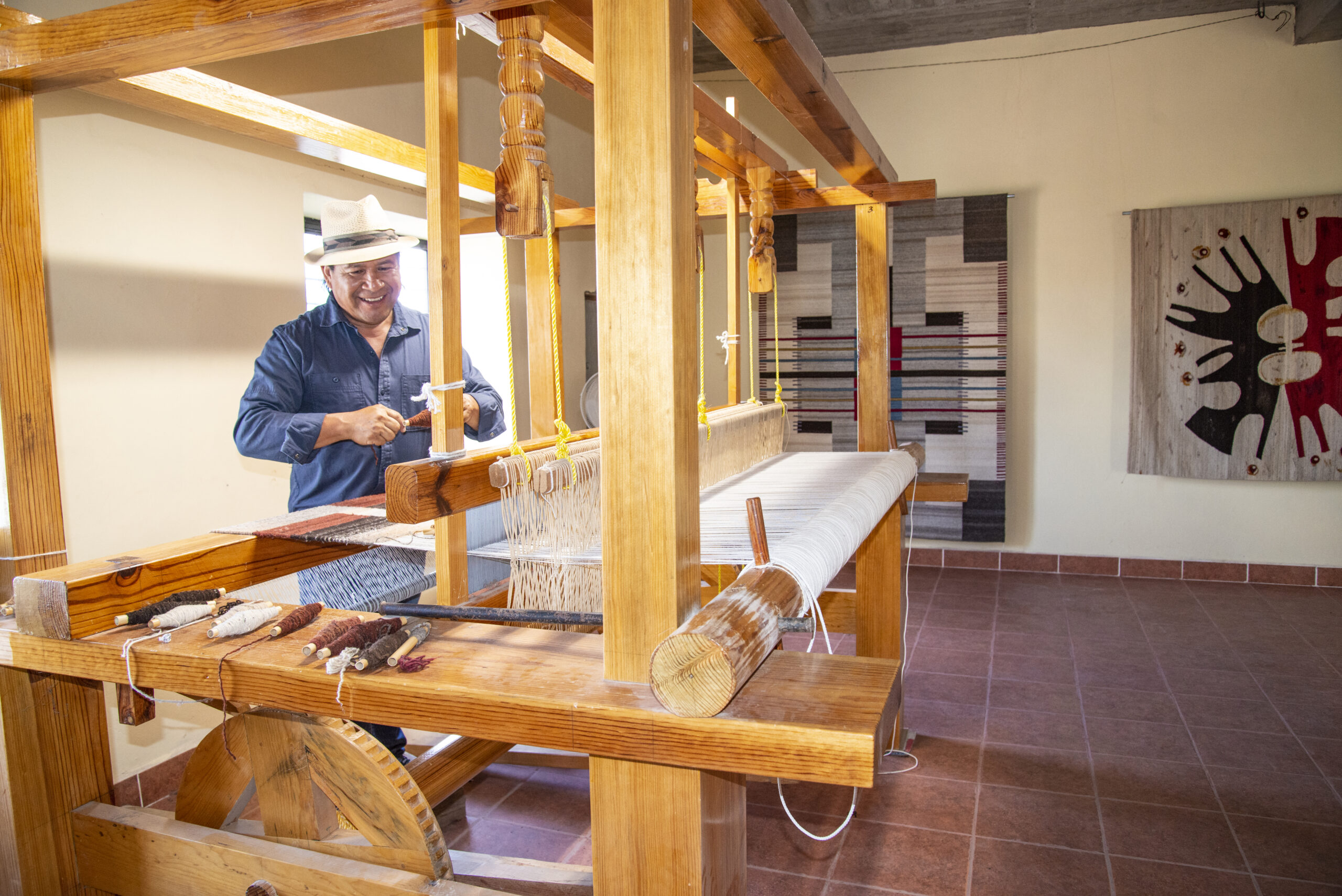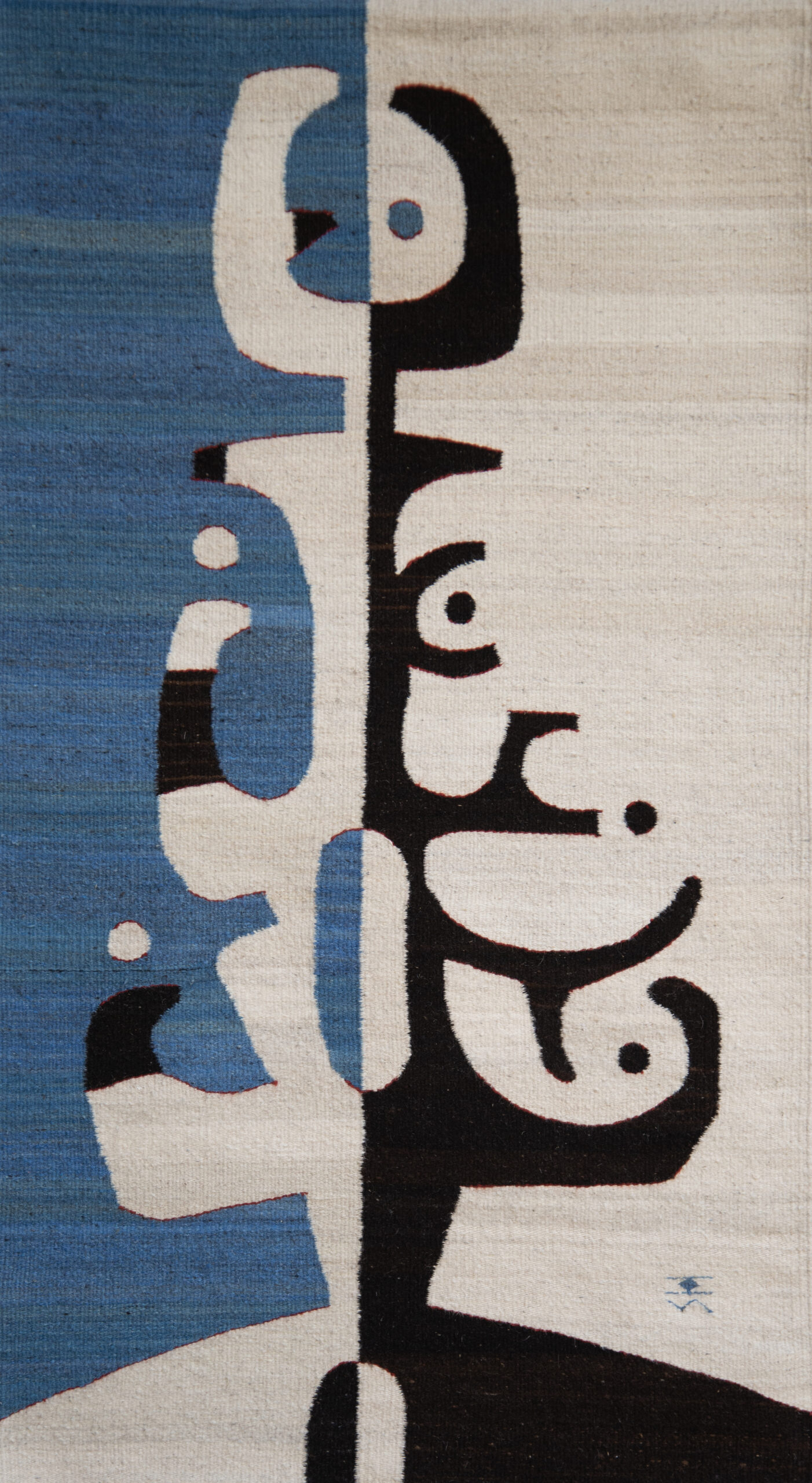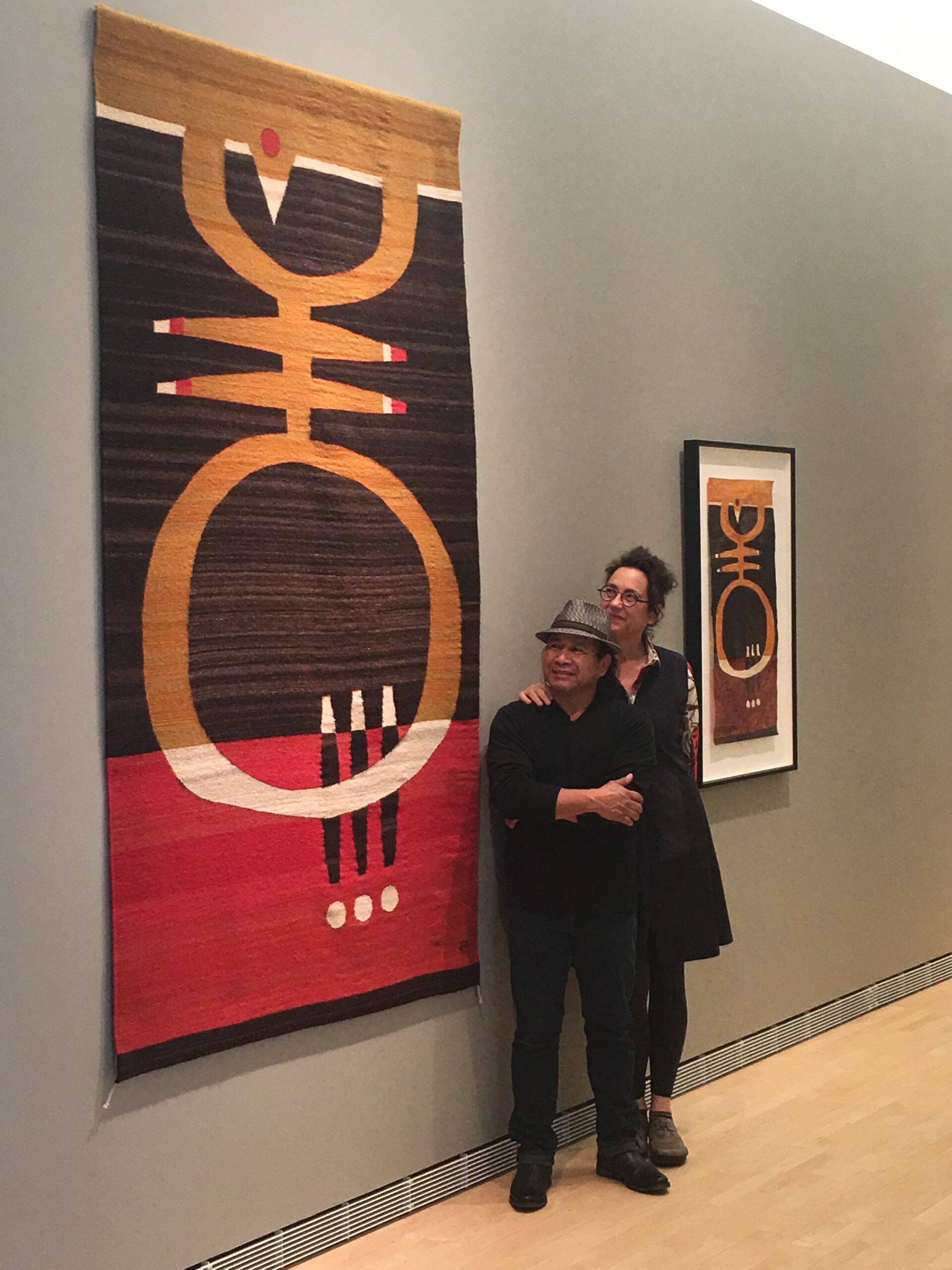In 1994, artists Sandra Jo and Wenceslao Martinez traveled to Door County, a popular summertime destination for locals and tourists alike that stretches out from eastern Wisconsin into Lake Michigan. They tried to place their works in local galleries, but local art dealers expressed skepticism that the works could sell.
Then, fortuitously, a local woman offered them an outbuilding on her property—a two-story chicken coop—which Sandra and Wence made official with a hand-painted sign, opening up shop for themselves. “Within a year, we were supported by the sales of our work,” Sandra says.
Before too long, Sandra and Wence expanded Martinez Studio into a more formal space in Jacksonport, where they have continued to work, opening their doors to the public every summer since. Inviting people in to learn about Wence’s weaving and the duo’s collaborative artistic process has always been deeply ingrained in their approach.

Oaxacan Roots
Wence was born and raised in Teotitlán del Valle, a village in the foothills of the Sierra Juárez mountains near Oaxaca, Mexico. “I spent my childhood roaming local mountains, shepherding, and developing a love for the natural world,” he says, learning to work with textile in the Zapotec tradition when he was nine years old alongside his father and grandfather.
The tonal variations inherent in both undyed wool and his home’s surrounding desert landscapes provided a well of inspiration, which he took with him to Mexico City as a 14-year-old, undertaking formal training under Bertha and Pedro Preux at the Taller Nacional de Tapiz (National Tapestry Workshop). And it was there in 1988 that a commission by a Wisconsin-based artist to translate drawings into woven pieces altered the course of both of their lives and creative practices.





A Meeting of Minds
Sandra, originally from Milwaukee, studied art at the University of Wisconsin-Green Bay, where she focused primarily on clay and developed a passion for meditational drawing. “I have a very deep appreciation and no boundaries about materials, or content—I did a lot of conceptual art study,” Sandra says. A few years later, a friend suggested that her drawings would translate well into weavings, and she learned about the work Wenceslao, or Wence, was doing in Oaxaca. Sandra commissioned 14 works, spurring a collaboration that has continued for three decades.
Sandra describes her paintings as symbolist compositions, stream-of-consciousness designs evocative of human, plant, and shelter forms that emerge from layers of ink, ash, dirt, and acrylic washes. Abstract glyphs morph into enigmatic landscapes and narratives, influenced over time by the Zapotec designs of Wence’s textiles.
“My own pattern-driven geometric designs investigate pattern and color beyond Zapotec tradition,” Wence says. When he works with Sandra, he translates her paintings into woven compositions, exchanging color and detail into bold fiber pieces. He continues the legacy of his family’s weaving tradition, too, by continuing to work in Oaxaca for part of the year, in addition to a wintertime gallery space in Santa Fe. “One of my greatest joys as a steward of my village’s legacy is mentoring the next generation of weavers in Teotitlán,” he says.
